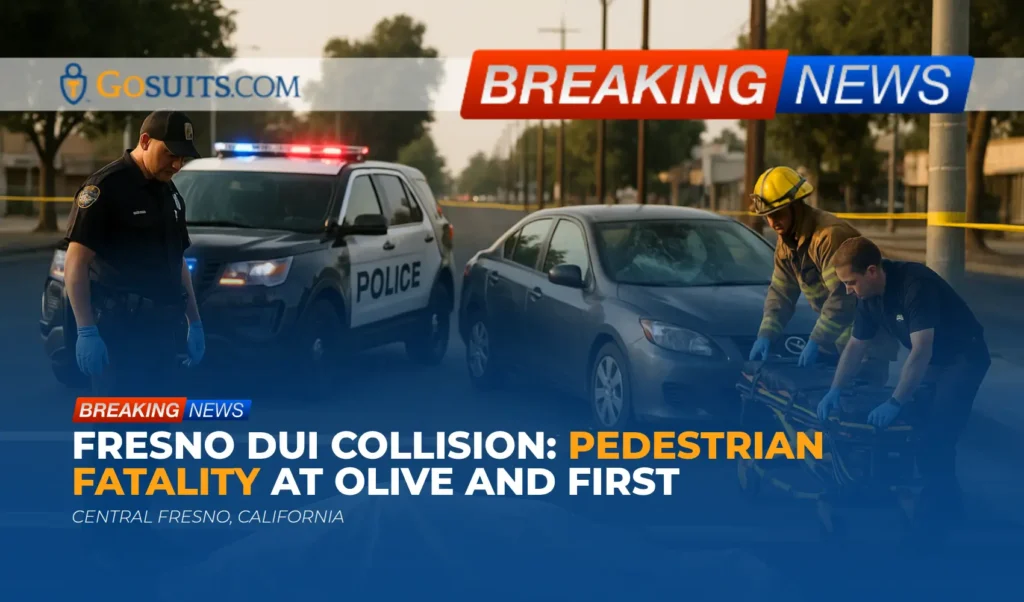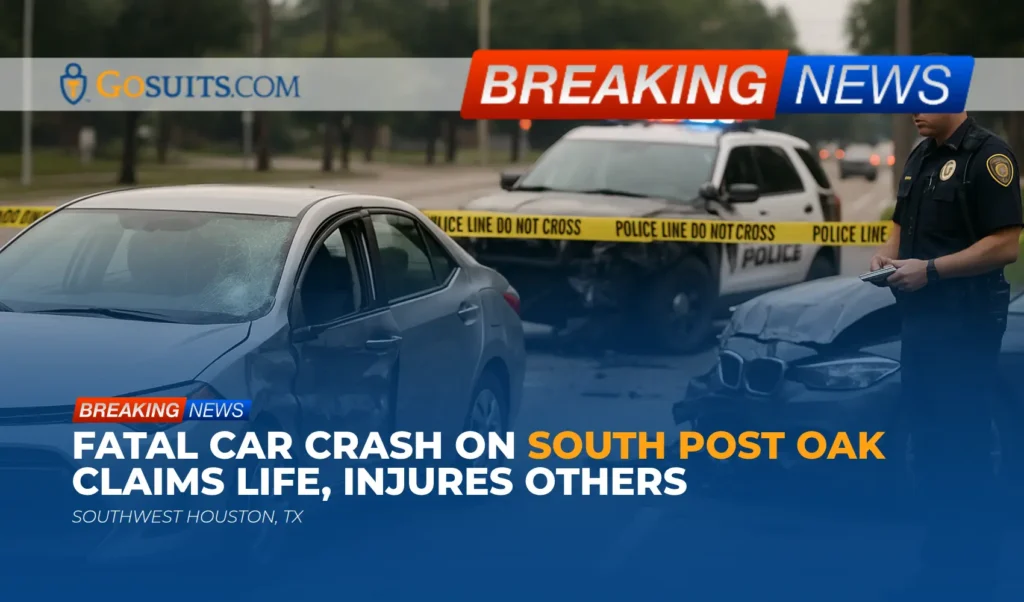A heartbreaking incident in Birmingham, Alabama, has resulted in the death of a 3-year-old boy who was left in a hot car for approximately five hours. The incident occurred on Tuesday, July 22, during what was designated a “First Warning Impact Day” due to the high heat index, which reached triple digits. The child, Ke’Torrius Starks Jr., was in the temporary care of a worker contracted by the Department of Human Resources (DHR) at the time of the tragedy.
Details of the Incident
According to reports, Ke’Torrius was picked up from daycare at 9:00 a.m. for a supervised visit with his biological father. The visit concluded around 11:30 a.m. However, instead of returning the child to daycare, the DHR worker, employed through The Covenant Services, Inc., allegedly made several stops, including picking up food for her family and shopping at a tobacco store. The worker then reportedly drove to her home, where she left Ke’Torrius in the car, parked outside, for over five hours.
The child was discovered in the vehicle between 12:30 p.m. and 5:30 p.m. local time and was pronounced dead at 6:03 p.m. The heat index on that day reached 108 degrees, and the family’s attorney, Courtney French, stated that the interior temperature of the car likely exceeded 150 degrees.
DHR and Provider Response
A spokesperson for Alabama DHR confirmed that the child was in DHR custody and being transported by a contract provider when the incident occurred. The provider, The Covenant Services, Inc., has since terminated the employee involved. Due to confidentiality, DHR has not released further details regarding the child’s identity or the specific circumstances leading to the death.
Legal Implications in Hot Car Deaths
Hot car deaths are a tragic but preventable occurrence, often resulting from negligence. In cases where a child dies after being left in a hot car, various legal avenues may be pursued to seek accountability and justice. These avenues often involve personal injury claims, particularly negligence claims, against the responsible parties.
Negligence, in a legal context, is defined as the failure to exercise the care that a reasonably prudent person would exercise in similar circumstances. When someone’s negligence results in injury or death, they can be held liable for the damages. In the context of hot car deaths, proving negligence typically involves demonstrating that the caregiver or responsible party had a duty of care, breached that duty, and that the breach directly caused the child’s death.
Duty of Care
A duty of care is a legal obligation to avoid acts or omissions that could foreseeably cause harm to others. Caregivers, including parents, foster parents, daycare providers, and in this case, DHR workers and their contractors, have a clear duty of care to protect children under their supervision. This duty includes ensuring the child’s safety and well-being, which involves not leaving them unattended in potentially dangerous situations, such as a hot car.
Breach of Duty
A breach of duty occurs when the caregiver fails to meet the required standard of care. In hot car death cases, this could include forgetting a child in the car, being distracted and leaving the child unintentionally, or knowingly leaving the child unattended in a vehicle under dangerous conditions. The actions of the DHR worker in this case, including making multiple stops and leaving the child unattended for five hours on a day with extreme heat, would likely be considered a significant breach of duty.
Causation
To establish negligence, it must also be proven that the breach of duty directly caused the child’s death. In hot car death cases, this is often straightforward, as the connection between leaving a child in a hot car and the subsequent heatstroke and death is evident.

Damages
Damages in a personal injury or wrongful death case refer to the compensation sought to cover the losses resulting from the incident. In hot car death cases, the types of damages that can be claimed include:
- Funeral and burial expenses: The costs associated with the child’s funeral and burial.
- Medical expenses: Any medical costs incurred in attempts to save the child’s life.
- Loss of future earnings: While this is more applicable in cases involving adults, it can sometimes be considered if the child had future earning potential.
- Pain and suffering: Compensation for the emotional distress and suffering endured by the parents and family members due to the child’s death. This can be a significant component of the damages in such tragic cases.
- Loss of companionship and consortium: Compensation for the loss of the child’s companionship, love, and support.
Potential Defendants
In hot car death cases, several parties may be potentially liable, depending on the circumstances. These may include:
- Caregiver: The individual directly responsible for leaving the child in the car. In this case, the DHR worker.
- Employer of the Caregiver: If the caregiver was working in a professional capacity, such as for a daycare or a contracted service provider like The Covenant Services, Inc., the employer may also be held liable under the doctrine of respondeat superior. This legal principle holds an employer responsible for the negligent acts of its employees committed within the scope of their employment.
- Government Agencies: In this instance, the Alabama DHR may face scrutiny, particularly regarding their oversight and contracting practices. If it can be shown that the DHR failed to properly vet, train, or supervise the contracted worker, they could potentially be held liable for negligence.
Role of Contract Providers
The use of contract providers by government agencies like DHR adds another layer of complexity to liability. While the contract provider is directly responsible for the actions of their employees, the government agency that contracts with them may also have some liability, particularly if they failed to adequately ensure that the provider was competent and compliant with safety standards.

Investigating the Incident
A thorough investigation is crucial to determine all the facts and circumstances surrounding the hot car death. This investigation may involve:
- Reviewing the timeline of events: Reconstructing the events leading up to the child’s death, including when the child was picked up, where the caregiver went, and how long the child was left in the car.
- Examining the caregiver’s background and training: Looking into the caregiver’s history, qualifications, and training to assess whether they were properly equipped to handle the responsibility of caring for a child.
- Assessing the policies and procedures of the DHR and the contract provider: Evaluating the policies and procedures in place to ensure child safety and whether these policies were followed in this case.
- Interviewing witnesses: Gathering statements from individuals who may have relevant information, such as daycare staff, the child’s father, and anyone who saw the caregiver on the day of the incident.
Preventative Measures
Hot car deaths are entirely preventable, and it is crucial to raise awareness and implement measures to prevent these tragedies. Some preventative steps include:
- Never leaving a child unattended in a vehicle: Even for a short period, the temperature inside a car can rise rapidly, posing a severe risk to a child.
- Developing reminders: Caregivers should develop habits or use tools to remind them to check the back seat before leaving the vehicle, such as placing a purse or cell phone in the back seat.
- Communication between caregivers: Daycares and other caregivers should have clear communication protocols to ensure that children are accounted for at all times.
- Education and awareness campaigns: Raising public awareness about the dangers of hot cars and providing education on preventative measures can help reduce the number of incidents.
Commentary from Gosuits Birmingham, Alabama Personal Injury Attorney
This case is a stark reminder of the devastating consequences of negligence and the critical importance of safeguarding children under our care. The circumstances surrounding Ke’Torrius’s death are particularly troubling, given that the child was in the care of a DHR worker, whose primary responsibility was to ensure his safety and well-being. The allegations that the worker made multiple personal stops and left the child unattended for five hours on a day with extreme heat raise serious questions about the level of care and supervision provided.
From a legal perspective, this incident may give rise to a personal injury claim against the negligent parties. The family has the right to seek justice and compensation for their unimaginable loss. It is essential that all parties involved, including The Covenant Services, Inc., and potentially the Alabama DHR, are held accountable for their actions and omissions. A thorough and independent investigation is necessary to determine the full extent of the negligence and to ensure that measures are put in place to prevent such tragedies from occurring in the future.
The extreme heat conditions present on the day of this incident further underscore the severity of the negligence involved. The fact that the heat index was in the triple digits meant that the interior of the car would have reached dangerously high temperatures in a very short period. Leaving a child unattended in such conditions for an extended time is an act of gross negligence that demands accountability.
This case also highlights the critical need for government agencies and organizations that work with children to implement and enforce stringent safety protocols. Proper training, oversight, and adherence to safety guidelines are essential to prevent tragedies like this. When systemic failures contribute to a child’s death, it is imperative that these issues are addressed to protect other vulnerable children in the future.





